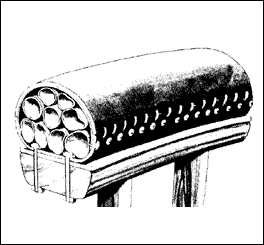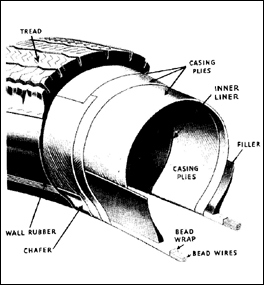By now, of course, the motor car was appearing and the
first motor vehicle specifically designed for the pneumatic
tyre took part in the Paris to Bordeaux (and back) race
in 1895. 720 Miles and 22 inner tubes later the Daimler
finished ninth from a field of 42. From that event to
today the simple tyre has developed in many directions,
be it towards a child’s tricycle, a giant earthmover
or the ubiquitous motor car, the last category itself
ranging from micro runabouts to Formula 1 Grand Prix racers.
Each is a triumph of engineering where numerous component
parts of rubbers, fabrics or steel are individually formulated
and combined to meet the requirements of the particular
user. Whatever the application, these tend to be comfort,
puncture-resistance, wear and performance, the last generally
being measured as road adhesion in wet and dry conditions,
as well as absolute speed certification. In a short article
such as this it is impossible even to list technical developments
but two important leaps forward merit note. In 1948 Michelin
created the radial tyre with its vastly superior grip,
whilst in 1972 Dunlop did away with the inner tube on
car tyres






